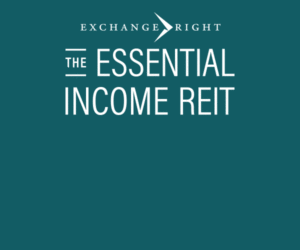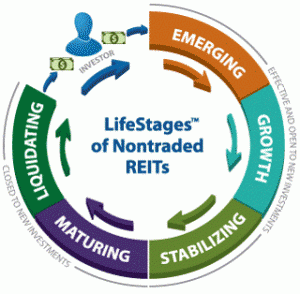Johnathan Rickman | Blue Vault
As the majority of real estate investors enter retirement age and seek to preserve their income, capital, and tax benefits with passive investments, many are turning to Delaware Statutory Trusts (DSTs), which provide a popular exit strategy known as an UPREIT. What’s an UPREIT you ask? Read on:
What is an UPREIT?
An UPREIT — short for Umbrella Partnership Real Estate Investment Trust — is a tax-advantaged investment structure that allows property owners to exchange their DST ownership into the operating partnership of a more diversified real estate investment trust (REIT). It provides an alternative to selling property investments outright and paying capital gains taxes or completing another 1031 exchange.
For estate planning purposes, an UPREIT can help families or individuals transfer their real estate ownership to heirs with a stepped-up tax basis, eliminating all of the capital gains and depreciation recapture up to the date of inheritance. UPREITs can offer investors in DSTs with a much more broadly diversified exit strategy when their offerings go full cycle.
Real estate investors who simply wish to transition out of active property management prefer the UPREIT option as well. That’s because the structure allows them to continue enjoying income and growth potential while giving them access to liquidity, should their needs change, or for their heirs to take advantage of after a step-up-in-basis event.
UPREITs’ unique structure boosts investor access to economies of scale — providing them with tax-advantaged diversification via the REIT’s actively managed portfolio of properties, and with potentially less risk exposure depending on the quality of the REIT’s portfolio and management.
“We see significant demand from 1031 investors seeking optionality and risk mitigation in their exit strategy,” said Warren Thomas, a Managing Partner of ExchangeRight. “The UPREIT provides a bridge to long-term tax deferral and enhanced liquidity, allowing investors to continue benefitting from the stability of necessity-based net-leased real estate while accessing equity and diversifying their holdings without triggering an immediate tax event,” he added.
How Do UPREITs Work?
UPREITs allow real estate owners to contribute property to a REIT in exchange for operating partnership units (similar in value to REIT shares) instead of cash. This transaction allows property owners to defer capital gains taxes that would otherwise be triggered by selling the property outright. The exchange qualifies for tax deferral under Section 721 of the Internal Revenue Code. Typically, these operating partnership units can be converted into REIT shares at a later date, often on a one-to-one basis, to be liquidated at the discretion of the investor.
UPREITs do not require the use of a qualified intermediary, are not subject to 45-day or 180-day timelines, and do not require the investor to match debt to avoid taxation on the transfer to most REITs. There are special provisions a REIT can provide for investors that may have “excess debt over basis” to assure that none of the transfer to the REIT is taxable to the investor at the time of the transfer.
Like all real estate investments, an asset’s valuation within an UPREIT portfolio can fluctuate and create potential volatility for unitholders, depending on broader market conditions and how effectively the properties are managed as part of a larger portfolio. However, most REITs will have a systematic valuation process that provides transparency not available in the DST structure.
For financial professionals and their investors who are considering a DST that provides UPREIT options, it is critical to evaluate the quality and performance of not only the DST, but also the REIT to ensure the long-term investment needs and goals can be achieved.
One of the main factors to consider when evaluating a REIT is dividend coverage. REITs that fully cover their dividends with adjusted funds from operations (AFFO) are more likely to provide sustainable dividends with lower volatility. That’s because they are not using investor equity or debt to pay out their distributions. REITs that pay out dividends using investor equity or debt must rely on appreciation to offset the dilutive effect of paying dividends that are not fully covered by AFFO.
UPREIT Spotlight: ExchangeRight Essential Income REIT
ExchangeRight’s Essential Income REIT is a privately offered, perpetual, nontraded REIT that is structured to facilitate UPREIT transactions. It works together with ExchangeRight’s DST strategies, which often provide investors with multiple DST exit options. Many of their programs provide three primary exit options: cashing out, performing a 1031 exchange, or using a 721 exchange into their net-leased REIT.
The Essential Income REIT, which became effective in February 2019, manages over 360 properties, with a 98% lease rate, according to Blue Vault data. The ExchangeRight REIT focuses on essential properties in the necessity retail, healthcare, and logistics space. In prioritizing credit-worthy national tenants, the REIT has generated solid dividends, fully covered by its AFFO or modified funds from operations since inception and for all of 2024, as reported by Blue Vault.
Learn about Blue Vault membership and how our performance data can help build your advisory practice. Are you an asset manager, broker-dealer, or other entity? Contact us today to see how we can help you.











